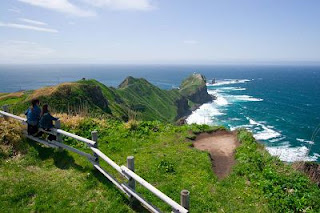
Here's the thing they don't tell you about travel photography. It's kind of a solo pursuit. You tend to wander around for hours on your own, getting in the zone and photographing away.
Not that you'd ever tell your closest and dearest this but they kinda get in the way. In the nicest possible way (if you're reading this dear!). It's really difficult for us photography buffs to take a holiday (ie a trip to somewhere other than the local supermarket) without a camera.
In fact we positively get withdrawal symptoms if we have to leave the hotel room in some exotic city without being loaded down with bodies and lenses galore.
Which is a bit frustrating for your travel partners who don't share your enthusiasm - especially the little ones. Which can lead to disparaging comments and general harassment every time you take more than two seconds to get a shot off - unless...
The sneaky way to get as much time as you want to photograph when on holiday is to point the lens in the right direction. The right direction according to your better half that is. And that direction would be? Anywhere your kids are. :)
In all seriousness though, photographing your own kids on holiday is great practice for children photography in general. They're already used to you sticking a big lens in their face so they basically ignore you. You get to sign the model releases yourself which means you don't have to ask complete strangers to. Your better half will give you lots of hugs and kisses for being so dedicated at preserving such precious memories. And you get to take your camera wherever you go.
The trick with photographing the kids when you travel is to let everything unfold naturally. Because they're your own you can direct them a little bit, but get too demanding and they'll get cranky, the other half will get cranky and you'll be back in camera-ban land. So as much as possible let things pan out by themselves.
Wait until the kids are doing something that they're totally engrossed in. Here my little boy has just had a Chinese seal with his name on it carved and is paying for it. He has absolutely no concept of money but knows it has some kind of value so was very proud when he handed it over like a big boy. Buying something gave me an opportunity to photograph the carver as he was working. I knew when he was finished that my son would be dying to pay so set myself up on the opposite side of the table and waited for the moment.
Digital photography means that the kids (and other half) will be dying to see how the pictures turned out and to improve on it next time. They actually suggest to you to start photographing. And while you may not want to come home with only shots of the family (ooh I didn't say that!) just by having the camera out and dedicating some time to recording the great family occasion gives you permission to photograph other stuff as well. Hell you might even get some time off to go out by yourself if you do a really good job on the kids. :)
You don't have to be sneaky to be a travel photographer but sometimes it helps!
Oh and for those who don't know you can also follow me on
Twitter where I post a heap of great links to photography sites that I don't mention here.














